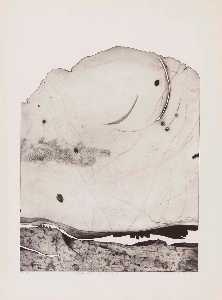Mildred Thompson
Mildred Thompson
yer: Jacksonville
Doğmuş: 1936
Ölüm: 2003
Biyografi:
Mildred Jean Thompson was an American artist who worked in the media of painting, drawing, printmaking, sculpture and photography. She was also a writer and, beginning in 1987, was an associate editor for the magazine Art Papers in Atlanta, Georgia. Critics have related her art to West African textiles and Islamic architecture; they have also cited German Expressionism, music (both American jazz and classical European music, ) and Thompson’s readings in astronomy, spiritualism and metaphysics as important artistic influences.
Thompson grew up in Jacksonville, Florida. Her formal art training began in 1953 when she entered Howard University in Washington, D.C. There she found a mentor in James A. Porter (1905–1970), who was head of the school’s art department. He arranged for Thompson to receive a scholarship at the end of her junior year for summer study at the Skowhegan School of Painting and Sculpture in Maine. After Thompson received the Bachelor of Arts from Howard, Porter assisted her in entering the Brooklyn Museum of Art School on a Max Beckmann Scholarship. She began to exhibit, and her work was accepted for the Art U.S.A. ’58 exhibition in Madison Square Garden.
During that time Thompson applied and was turned down for a Fulbright Scholarship. Feeling herself ready for study in Europe, Thompson decided to go there on her own. She worked to save money during the rest of the school year and, through the auspices of Samella Lewis (1924–), got a summer job teaching ceramics at Florida A&M University in Tallahassee. In this way she earned enough for steamship passage to Europe.
Her trip to Germany was attended by good fortune. She had decided to study at the Art Academy of Hamburg (Hochschule für bildende Künste Hamburg) even though, at the time she arrived, she had not yet applied or been accepted there. Nor did she have any plans as to where she would live. A few private lessons were all she had to prepare herself for the German language. Nevertheless, armed with pluck, a strong portfolio and the help of some brand-new German friends, she found a room and was immediately accepted into the Academy. There her painting teachers were Walter Arno (1930–) and Emil Schumacher (1912–1999). She learned etching, lithography and other printmaking media from Willem Grimm (1904–1986) and Paul Wunderlich (1927–2010). She also met at this time the printmaker Horst Janssen (1929–1995), who introduced her to Galerie Sander in Hamburg, where Thompson had her first solo exhibition. At the end of her first year she received a scholarship, the Reemtsma Stipendium, that paid for her living and school expenses.
After three years at the Academy, Thompson was ready to begin her professional career in the United States. In early 1961 she returned to New York City. The social and artistic acceptance Thompson had enjoyed in Germany, however, was not to be found even in that most cosmopolitan of American cities. She soon realized that because she was a black woman, she was refused the shows and gallery representation that she felt her work deserved. In an autobiographical essay, Thompson recounted that "One woman dealer... said that it would be impossible for me to have a show in New York as an artist. ...that it would be better if I had a white friend to take my work around, someone to pass as Mildred Thompson." She did, however, gain an audience with William Lieberman at the Museum of Modern Art; two of her prints were purchased for the collection on his recommendation.
In the fall of 1961 and again in 1962 Thompson received fellowships to the MacDowell Colony in New Hampshire, where she worked on drawings and paintings. In 1963 she returned to Germany to live, partly because she could find no sales outlet for her work, and partly because of growing racial tension in the United States. She was not alone. Other young black artists who chose to leave the U.S. during the 1950s and 1960s include Harvey Cropper, Herbert Gentry, Arthur Hardie, Clifford Jackson, Sam Middleton, Earl Miller, Norman Morgan, Larry Potter and Walter Williams. In the words of artist David C. Driskell, "They chose a form of cultural exile over expatriation, hoping for a better day to come about in the land of their birth." All settled in Europe. Thompson established herself in the Rhineland town of Düren and once again began exhibiting and selling her work there and in the German cities of Bensberg, Aachen, and Cologne.
Thompson's work in the 1960s was figurative, but in the early 1970s she moved toward total abstraction. In Europe her works reflected the formal ideas of art for art's sake, and did not respond to the politicized art of the Black and Women's movements in the United States. According to writer Alexis De Veaux, "Thompson thought of herself as an expatriate and did not separate her identity as black from her identity as American..." although she eventually disavowed "...any claim to being American." Years later Thompson defended herself against the charge that because of her years spent in Europe, she was not a "Black" artist. In a 1987 essay for SAGE magazine she wrote:
More...
Wikipedia link: Click Here





